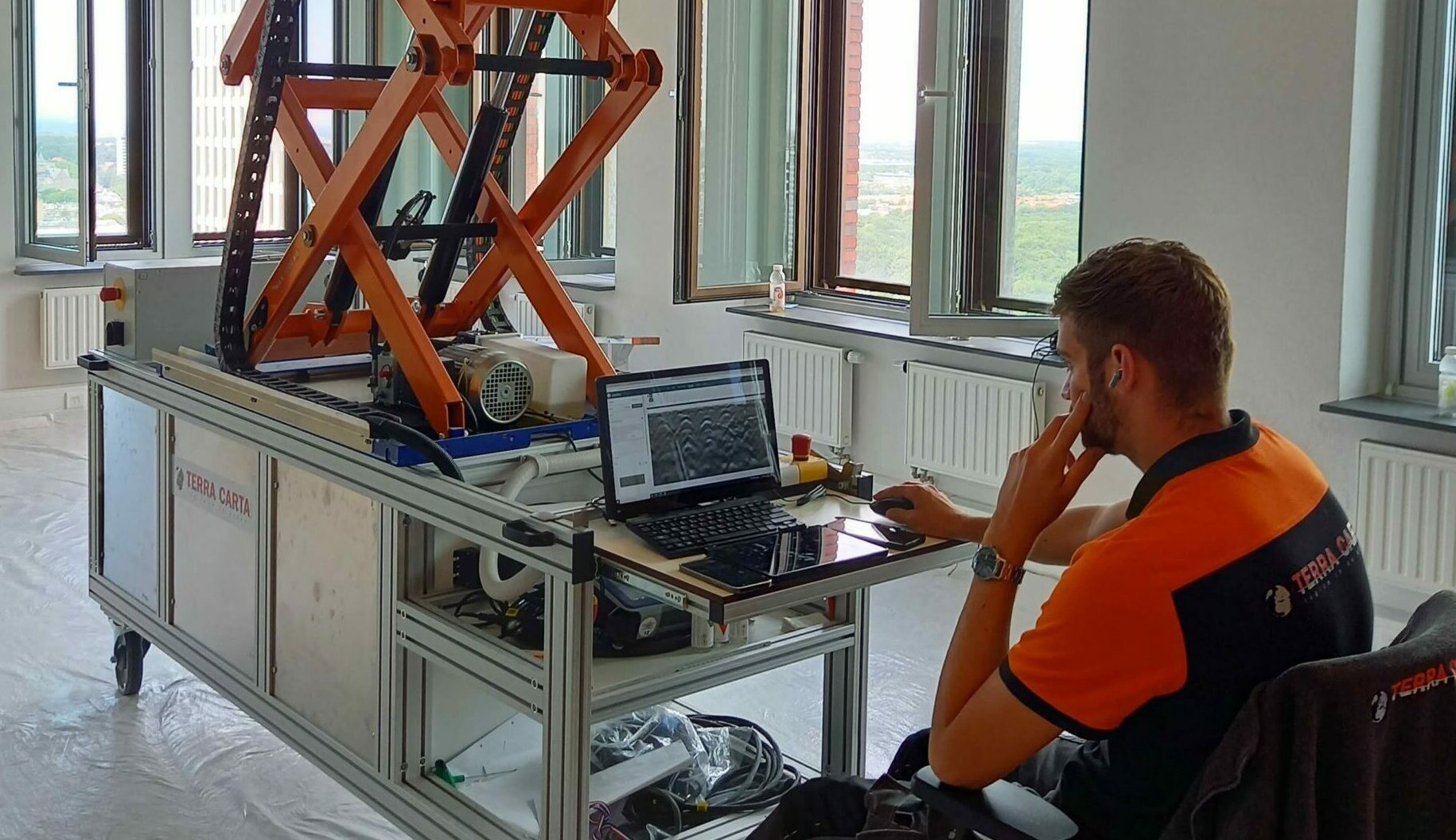TerraCarta does ground(breaking) research!
At TerraCarta, we tackle issues thoroughly and continuously seek innovative solutions. To sustain this mission, we invest in training our staff and researching alternative methods.
Currently, we have multiple testing grounds, which extend beyond just education. These testing grounds serve as learning environments where individuals are trained and where in-depth research into innovative solutions takes place.
Environment
On the premises of our office, there exists a highly diverse soil composition. Additionally, we have introduced obstacles in the subsurface that drilling parties may encounter.
Given the frequent variations in soil composition every few meters, this testing ground is ideal for both training new drilling supervisors for SIKB protocol 2001 and for periodically maintaining collective knowledge, quality, and uniformity regarding accurately describing and sampling the soil. The obstacles in the subsurface provide a realistic scenario for when drilling needs to be performed.
Additionally, we have various types of monitoring wells here for training in SIKB protocol 2002.
Cables and Pipelines
In collaboration with Shell, the gas station, located about ten meters from our office, has been designated as a testing ground for cable and pipeline detection. In this testing ground, all cables and pipelines have been mapped using detection methods and then compared with all available maps and data. But it doesn’t stop there!
Subsequently, all cables and pipelines were excavated. 3D recordings of these excavations were made using photogrammetry. This unique combined dataset represents the ultimate form of pipeline detection combined with the necessary evidence.
The testing ground data and location serve several purposes:
RESEARCH – The dataset from this testing ground provides valuable insights into reflection types and material types under various weather conditions.
PRODUCTS – TerraCarta continuously investigates products from other manufacturers (than the ‘brands’ we typically use) or newly developed detection techniques.
TRAINING – Recognizing radar reflections is essential for both precise work in various field conditions and for engineering. This testing ground is an educational tool perfectly tailored to practical needs for training aspiring GPR specialists and conducting EML research.
INNOVATION – Additionally, we develop new concepts ourselves. The testing ground serves as the ideal practical situation for this purpose.
Railway
The respective testing ground is laid out behind our office in the form of a section of railway track with ballast, sleepers, and various foundations of overhead line portals. Originally, this testing ground was established for the development of the ‘drilling truck’. The drilling truck is a welding bus equipped with a drilling mechanism for taking ballast samples. The various foundations of overhead line portals are for determining ABC dimensions.
Over time, this location has also taken on an educational role. This testing ground enables us to train our staff in a safe environment for various railway activities. This includes activities such as taking ballast drilling samples using a cylinder drill, correctly conducting ground radar measurements in railway areas, or recognizing various types of overhead line portal foundations and how to approach them.
Recently, we have also used the testing ground for the development of a new product! With this, we visually and digitally visualize the structure of the undisturbed ballast bed and the underlying soil.
Concrete
With the aim of training our own employees, we have opened up a section of our office ceiling in Hoogeveen measuring 10m2. Here, we have replicated a wide-slab floor as found in practice. We have poured various installations into it to create as realistic a training location as possible. By having this situation ‘in-house’, TerraCarta employees can always be trained or retrained.
The skills learned in our testing ground can then be applied in the field. TerraCarta has been collaborating with Interboor Midsland on various projects across the country for several years to solve all structural problems. TerraCarta maps all reinforcement and installed installations, and then Interboor applies various drilling and anchoring methods.
And all this without (drilling) damage!
Recently, we published an article on our website about the advanced (3D) techniques we use to process and analyze data. We also use these techniques to map concrete. Read the article now on our website!
Horizontal directional drilling (hdd)
Since 2010, TerraCarta has been locating sinkholes and conducting horizontal directional drilling (hdd). Our first sinkhole was located for ProRail using a plastic probing rod in soft clay, laying the foundation for this thriving market segment. Over the years, more challenging situations have arisen. As we continually faced new challenges, we further specialized ourselves.
For years, we have developed into the leading player in mapping sinkholes and conducting horizontal directional drilling. However, to this day, we do not stand still! Locating sinkholes and conducting horizontal directional drilling is strenuous and highly labor-intensive work. Therefore, we have developed a measurement technique that significantly lightens the workload.
To develop this, we had a horizontal directional drilling installed on the premises of our company site in Hoogeveen. Here, a monitoring well was made with a length of approximately 70 meters and a depth of roughly 10 meters. Subsequently, a series of ‘research tubes’ were installed on either side of this monitoring well, allowing us to test new techniques.
The goal of this testing ground was: ‘To develop a technique that allows us to perform the work with the same precision while significantly reducing the physical strain on our employees.’ Now that we have succeeded, we can also use this testing ground for other purposes. For example, testing the reliability and efficiency of new or existing techniques in the market.
This testing ground is now used as a training center for new employees. We teach them how to handle techniques such as EML (electromagnetic locating) and the Gyroscope. But we also teach them how to anticipate external disturbances and what could potentially go wrong.
